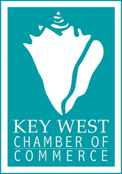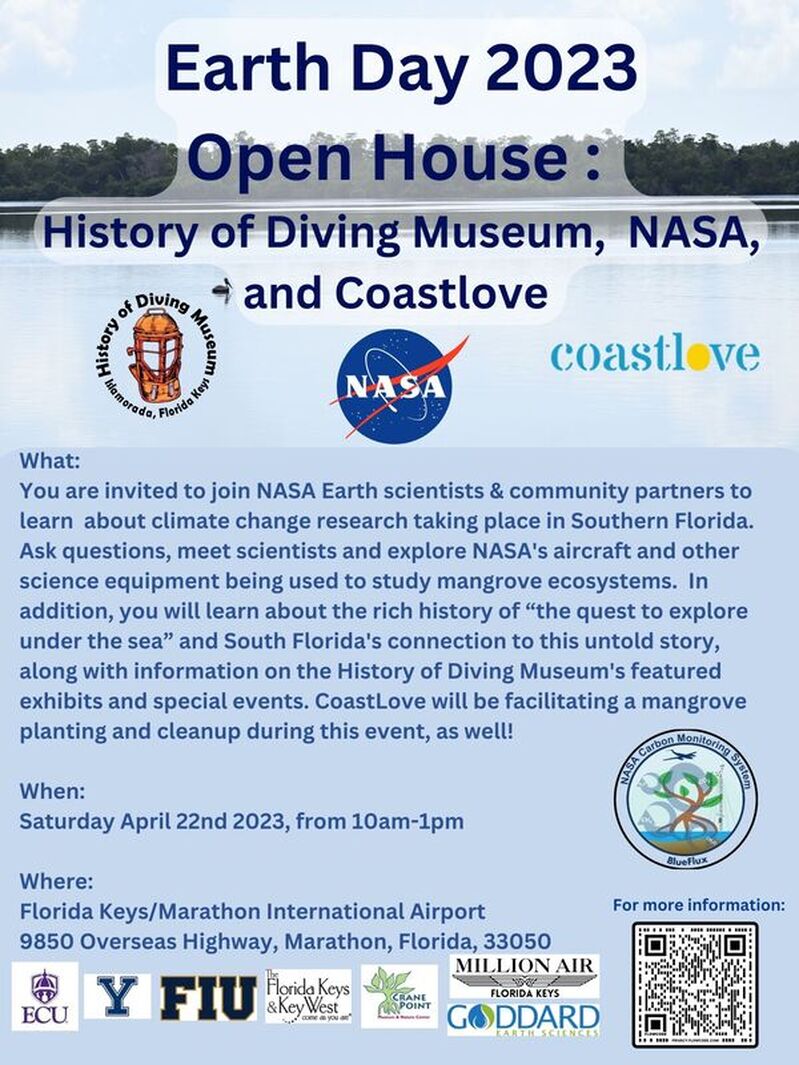|
Join the History of Diving Museum, NASA and CoastLove as they host a FREE Earth Day Celebration. Explore the Environmental Education Village to learn about NASA’s climate change research, and other environmental work being done. The village will feature local organizations focused on local conservation efforts, Saturday, April 22, 10am-1pm, at Million Air, 9850 Overseas Highway Marathon, FL 33050.
The History of Diving Museum, in partnership with NASA’s BlueFlux campaign and CoastLove are hosting this Earth Day event. There will be a simultaneous mangrove tree planting at the nearby hammock, facilitated by CoastLove. This Earth Day event will feature hands-on demonstrations of the scientific instruments utilized by the BlueFlux team to measure the greenhouse gas fluxes in the mangroves, along with a guided tour being offered of the CARbon Atmospheric Flux Experiment (CARAFE) aircraft used to study the mangrove ecosystems. The History of Diving Museum will be sharing the rich history of “the quest to explore under the sea” and South Florida's connection to this untold story, along with information on the History of Diving Museum's featured exhibits and special events. In addition, the event will host the National Park Service South Florida Office, Florida International University’s Florida Coastal Everglades Long Term Research Program, CoastLove, Florida Wildlife Society, and others focused on environmental conservation and restoration to share about their efforts and ways the public can get involved. Attendees will also receive a discount adult admission pass to Crane Point to visit Dive Into Art: Edge of the Sea Traveling Exhibit on Earth Day. In 2020, NASA’s Carbon Monitoring System funded the BlueFlux campaign to develop a database of carbon dioxide and methane fluxes - emissions and removals - for mangrove ecosystems in Florida and the Caribbean. This three year project brings together research scientists and engineers from NASA’s Earth Science Division at Goddard Space Flight Center, Yale University, Eastern Carolina University, and Florida International University to conduct these measurements from the ground to the sky and from space to gain a complete picture of how mangroves are being impacted by climate change, and how they can be a part of climate change solutions. This team is divided into three groups, the airborne flux team, the vegetation structure team, and the field survey team, all of which work in tandem to understand these fluxes. The research will help inform ‘blue carbon’ themed climate mitigation projects that support the global Paris Agreement implemented in 2014 to reduce greenhouse gas emissions to keep global temperature change to well below 2-degrees Celsius (3.6 F) warming. Because large areas of mangrove ecosystems have been lost due to coastal development, there is a lot of potential to restore these ecosystems while at the same time remove carbon dioxide from the atmosphere. Mangroves provide many benefits to coastal communities including preventing shoreline erosion and reducing flooding impacts during big storms, along with providing habitat for fish and other marine life. The BlueFlux campaign seeks to gain a clearer picture of how these mangrove ecosystems function to better understand their role on the Earth’s climate. The History of Diving Museum is a 501(c)(3) nonprofit located in Islamorada (MM83). Divers and non-divers alike are amazed by over 4,000 years of “the quest to explore under the sea.” The Museum has 14 core exhibits and two limited-time, featured exhibits, as well as unique gifts in the Museum Store. Check out DivingMuseum.org for more details, to become a member or shop online.
0 Comments
Leave a Reply. |
Submit Your StoriesChamber members send us your press releases on your organizations accomplishments, staff awards and/or major happenings. We will post them for free. Archives
July 2024
Categories
All
|
|
Greater Key West Chamber of Commerce. All Rights Reserved.
510 Greene St., First Floor | Key West, FL 33040 [email protected] | sitemap |


 RSS Feed
RSS Feed
